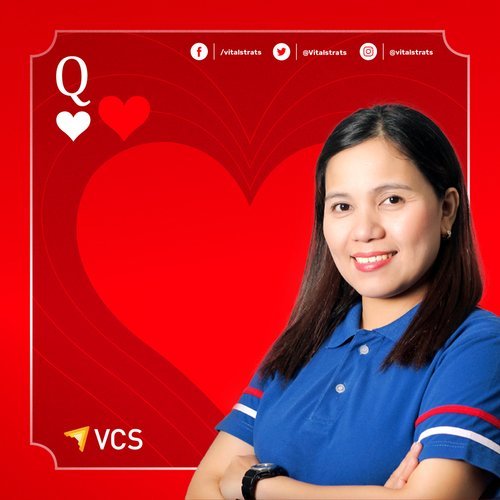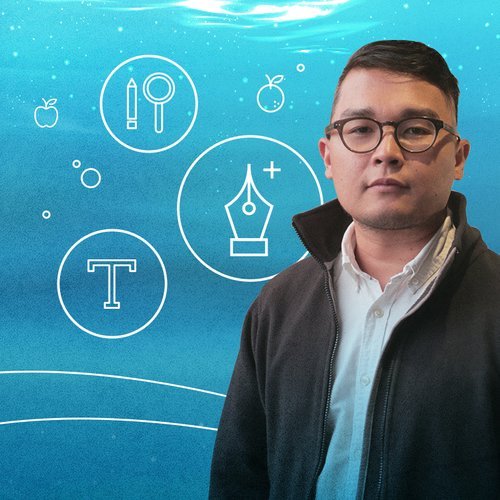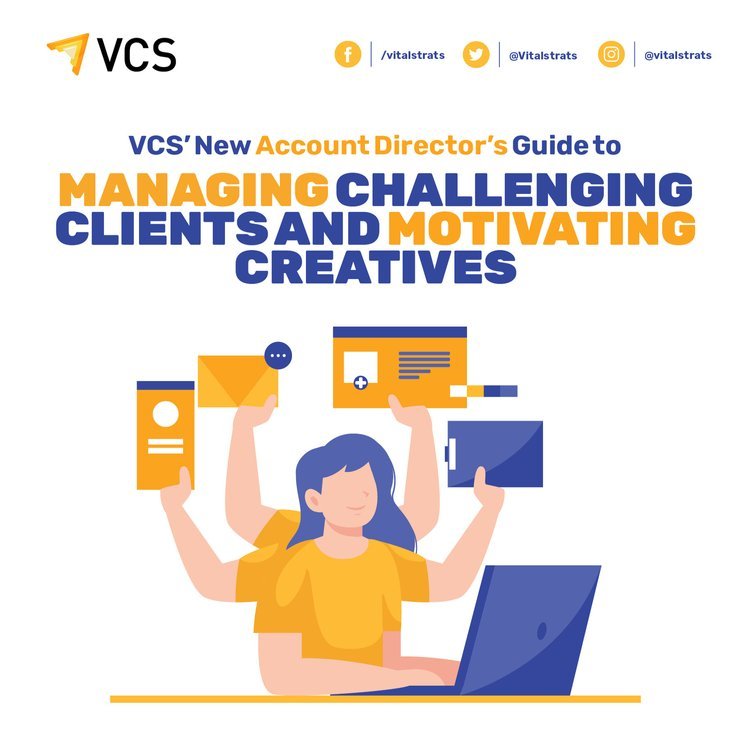Uncovering the Power of Design: Creative Director Jan Agulto Shares his Insights on Navigating Creativity, Connection, and Cultural Impact
“Design is more than just a tool for selling products or ideas. It's about something deeper, more profound – a medium through which ideas are brought to life, emotions are stirred, and connections are forged.”
In the dynamic world of creativity and innovation, the concept of design often gets intertwined with aesthetic appeal. But what if we told you that design is so much more?
Last August 10, VCS’ Creative Director Jan Agulto, an expert in the graphic design field, led an inspiring teach-back session that unveiled the true essence of design. The seminar, titled "The Power of Design," went beyond typical how-to tutorials and technical instructions. He embarked on a journey to explore the core of design itself—what it truly is and what it means to be a designer.
Last August 10, Jan Agulto, the Creative Director of VCS, conducted an enlightening educational session that revealed the authentic core of design.
Jan's journey and role at VCS: From mentorship to mastery
Jan, who has been pursuing this craft since 2006, is a graduate of Graphic Design with Second Class Honors from Manchester School of Art in the United Kingdom. His passion for designing was formed under the mentorship of Ian Anderson of The Designers Republic, a British graphic design studio based in Sheffield, England. However, it is within the welcoming embrace of VCS that he has grown.
Since 2015, Jan has been an integral part of the VCS team. His enduring commitment can be attributed to the invaluable opportunities and creative liberty that VCS has bestowed upon him, allowing him to explore his design capabilities to their fullest potential. Beyond these professional aspects, Jan warmly acknowledges the role of the people at VCS in anchoring his tenure. As time advances, he finds fulfillment in his role as a mentor, nurturing emerging talents and guiding them along the same transformative journey he experienced within the VCS family.
For him, this teach-back session was an opportunity to share insights gleaned from years of dedicated practice in Graphic Design. In a world bombarded with marketing strategies and advertising tactics, it's all too easy to lose sight of the essence of design. Jan affirmed that the session won’t teach how to do designs, but instead hopes to align everyone in the team in their understanding of design.
"It is an introduction to the uninitiated, and hopefully those that have a background in the subject learn something new as well and give them a different perspective," he said in an interview.
Art vs. design
Jan kicked off the seminar by addressing the misconception that design and art are on opposite poles of the creative spectrum.
Jan started the seminar by dispelling the notion that design and art exist at opposing ends of the creative spectrum.
Yet to distinguish the two concepts, he emphasized a fundamental distinction. In the realm of art, there are multiple answers to one image; there is no single correct answer. Meanwhile, design is purpose-driven and always done with intent.
"Art will be open for interpretation, and then design will have one actual answer that hopefully all of you will get," Jan added.
However, for a creative yet effective output to come to life, a designer must be able to make art and design work together. “That’s the ultimate goal of a designer—to deliver a specific message to a specific audience," he added.
But more importantly, when does art come into the design process? Jan mentioned that art enters when you are trying to ask questions, especially during briefings. He underscored the importance of infusing artistic flair into the process of posing these inquiries, a technique that effectively reveals otherwise inaccessible information.
Back to basics: Rediscovering the fundamentals
Before bringing artistic ideas to life, a solid grasp of the basics of design is essential. Jan briefly discussed the design principles—proximity, white space, alignment, contrast, and repetition. He also talked about the fundamentals of design—line, shape, form, texture, and balance.
Jan discussed that the foundational principles of design revolve around grasping the overarching concept, or developing the ability to value the numerous intricate elements constituting each composition.
Understanding these helps everyone, especially those who are not designers by profession, to always stay grounded in the foundations of design. When principles and fundamentals intertwine, they give birth to creations that resonate with the soul.
Jan mentioned that design isn't just aesthetics. Design is about problem solving, and it always has a specific purpose. He also emphasized that every design carries a story, a message, and a goal. It's a conversation between designers and the audience.
Exploring the formula of design
Text plus image equals design. This is how Jan described the typical formula for creating design. An image accompanied by a short, concise text, which serves as the design’s voice, can already make a good design. However, Jan said that the magic recipe for having impactful creations also considers the medium and audience. Design is about communication; it’s about guiding the viewer's perception, invoking emotions, and leaving an indelible mark.
Jan said that a meaningful design does not only consist of an image and text. A powerful design also gives value to the medium and audience.
In the words of renowned communication theorist Marshall McLuhan, "The medium is the message." The medium through which content is carried plays a vital role in how the audience receives the message.
"The medium through which a message is experienced shapes the user’s perception of the message," Jan stated. He also shared that designers can utilize a medium as part of the message to deliver content that would otherwise be difficult to access. For him, It's easier for people to appreciate and connect with an artwork if they can experience it.
Building meaningful connections
In connection with this, Jan shared three tips on how designers and marketers can better connect with their audiences.
1. Know your audience. Designers, especially those working in the marketing and advertising industries, should have a clear understanding of their audiences’ wants and needs, preferences, culture, and decision-making processes. They should also conduct research on how these audiences browse and react to the information they consume, both online and through traditional means.
2. Design for feeling. Emotion is a key element of design. Color, soft or sharp lines, typography, and clutter should be part of the consideration process because these elements can reshape the feeling of a design.
3. Design for clarity. The easier it is for the audience to understand your design, the easier it is for you to connect with them. There should be the right combination of smart design and brief, cohesive copy that play off each other.
Jan’s wisdom also shines a light on the path to resonating designs. In this session, recognition and familiarity were highlighted as the twin engines of design success. Connecting through familiarity, he shared that design creates bonds that last and are easily remembered.
The true power of design
Why does design hold so much power? Jan shared that design is so powerful because it creates culture—culture that shapes values. In turn, these values determine the future.
Jan emphasized that a meaningful design encompasses more than just imagery and text; it also values the medium and resonates with the audience.
"As a domino effect of that, whatever values that we hold now, those are the things that we’re going to pass on to the future generation, just like how the cave paintings were passed on to the Egyptians," he said.
Jan reminded us that designers should be careful when creating artworks because these have a great influence on everyone’s future. "Those kinds of domino effects are something I consider the power of design," Jan added.
Regardless of whether a design is good or bad, designers have the power to wield it. This leaves them with great accountability for ensuring that the designs they produce are for the good of everyone. Jan said that if you think that something is not done right or that there is a better way to do it, then choose the better option. Designers try to make a big impact on their audiences’ lives by influencing every decision they make. Thus, they have this big responsibility.
The dialogue didn't end with insights, as the Q&A portion also sparked engaging discussions. Jan's thoughtful responses deepened the VCS team’s understanding of design and its significant influence on the audience’s decision-making and culture.
The whole VCS team participated actively in the teach-back session and took part in the Q&A segment.
Lessons to carry forward
This teach-back session reminded everyone at VCS that design encompasses more than just aesthetic allure. It delves into a deeper, more profound realm, where ideas spring to life, emotions are kindled, and meaningful connections are forged. Furthermore, design holds incredible power as it shapes culture and influences how we make choices and form beliefs.
From the look of everyday objects to the logos of famous brands, design acts as an unspoken language, triggering feelings, and impacting our thoughts. It's like a silent force that guides our every decision and molds our understanding of our environment. Through its visual language, design holds the key to not only captivating the senses but also shaping the very fabric of how we interact with the world.
YOU MAY ALSO LIKE
Vitalstrats Creative Solutions (VCS) is a creative agency based in Quezon City, Philippines. VCS specializes in content marketing, advertising, and video production. We use strategic creativity to help our clients grow their brands.
Facebook: https://www.facebook.com/vitalstrats
Instagram: https://www.instagram.com/vitalstrats
Twitter: https://twitter.com/Vitalstrats
Agency Reel: http://bit.ly/VCSReel2019










